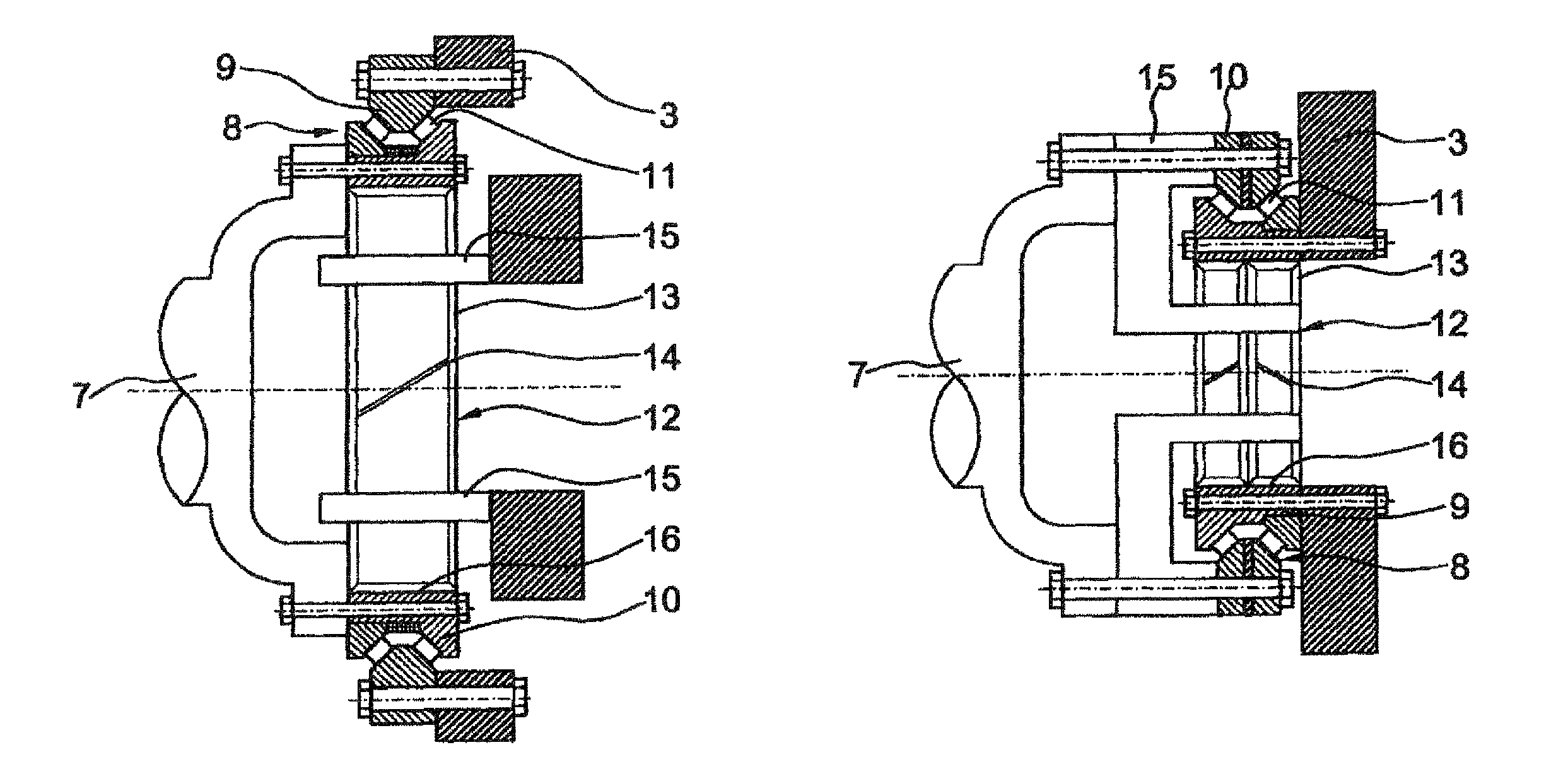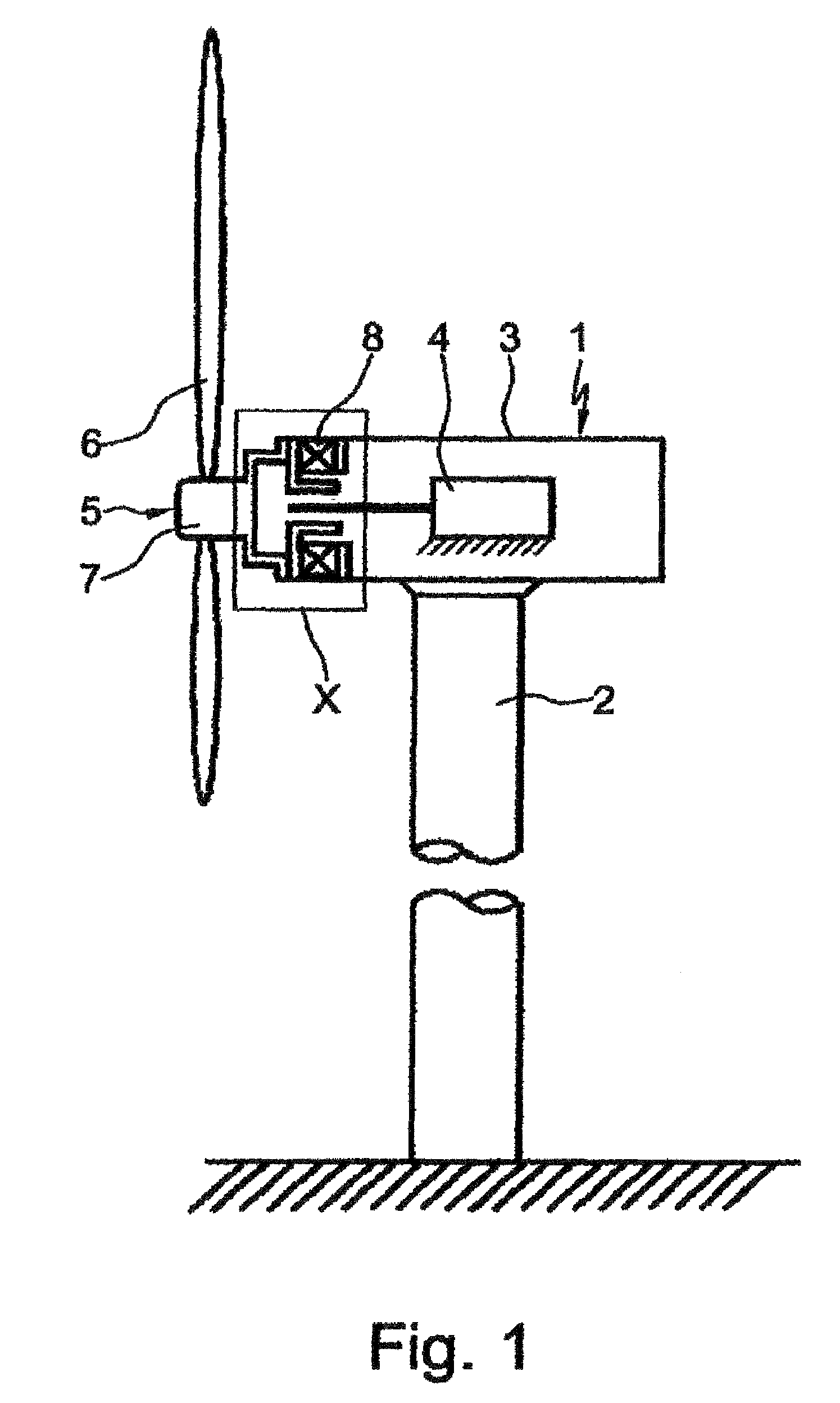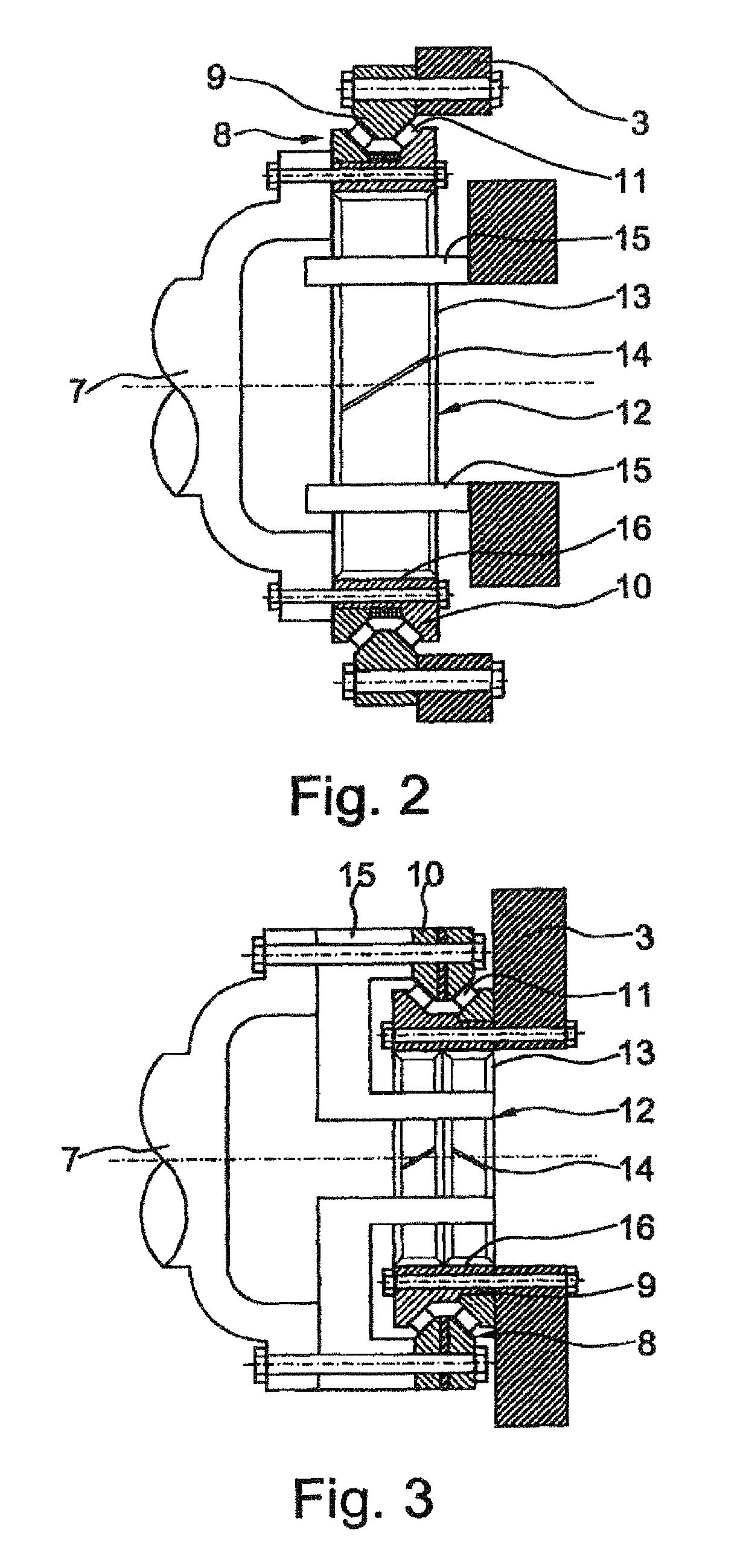Rotor bearing for a wind turbine
a technology for wind turbines and bearings, applied in the direction of bearings, roller bearings, shafts, etc., can solve the problems of over-exceeding the maximum permissible operating temperature premature failure of large roller bearings in the end, and increasing friction between roller bodies and raceways in bearing rings, etc., to achieve the effect of relatively easy compensation for processing errors
- Summary
- Abstract
- Description
- Claims
- Application Information
AI Technical Summary
Benefits of technology
Problems solved by technology
Method used
Image
Examples
first embodiment
[0010]Accordingly, for the rotor bearing according to the invention, claim 2 provides that in a first embodiment the large roller bearing is preferably in the form of a conical roller bearing having two rows which are arranged alongside one another and have conical rollers as roller bodies, the inner bearing ring, which has the internal tooth system, is separated axially asymmetrically into two ring elements.
second embodiment
[0011]However, according to claim 3, it is alternatively also possible that in a second embodiment the large roller bearing is preferably formed from an inclined ball bearing having two rows which are arranged alongside one another and have bearing balls as roller bodies, the inner bearing ring, which has the internal tooth system, is separated axially asymmetrically into two ring elements.
[0012]Designing the large roller bearing as a two-row conical roller bearing in this case represents the preferred practical embodiment since this type of bearing fundamentally has higher load ratings and a higher power density. However, if the intention is to use large roller bearings with larger diameters, in which the power density no longer represents the critical criterion, a technically quite acceptable alternative is to be also designed in the form of a two-row inclined ball bearing. In this case, the two types of bearing, both for the inner bearing ring and for the outer bearing ring, can ...
third embodiment
[0028]FIG. 6 shows a partial view of a cross section through the large roller bearing of the rotor bearing according to the invention; and
PUM
 Login to View More
Login to View More Abstract
Description
Claims
Application Information
 Login to View More
Login to View More - R&D
- Intellectual Property
- Life Sciences
- Materials
- Tech Scout
- Unparalleled Data Quality
- Higher Quality Content
- 60% Fewer Hallucinations
Browse by: Latest US Patents, China's latest patents, Technical Efficacy Thesaurus, Application Domain, Technology Topic, Popular Technical Reports.
© 2025 PatSnap. All rights reserved.Legal|Privacy policy|Modern Slavery Act Transparency Statement|Sitemap|About US| Contact US: help@patsnap.com



